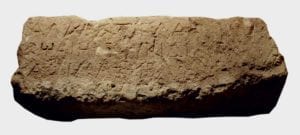Castro in-depth
castro in-depth
Castro – In-depth
Prehistory
The Romanelli Cave and the Zinzulusa Cave have revealed new aspects of art, material culture and religion of these ancient people of Italy. The name of Grotta Zinzulusa comes from the dialectal term “zinzulu”, which means rag, alluding to the shape of the stalactites that come down from the cover of the cave. It is a large cavity of karst origin, within which there are a long tunnel, small lakes and a large terminal environment, frequented from the Paleolithic to the Middle Ages, perhaps home to a water cult.

The Bronze Age refers to recent finds in Palombara, in a plateau at the foot of the town of Castro, near the rocky coast overlooking the sea. Here a fortified settlement of the second millennium BC was discovered, comparable with the other sites identified along the Adriatic coast (Porto Russo, Otranto, Roca, etc.). Noteworthy are the local ceramics of the protogeometric phase (XI-X sec. a. C.), in clear purified clay with triangular decorations painted in brown.
Large soft stone slabs
This decorative scheme, called by the specialists “peopled scroll”, consists of vegetable circles animated by animal figures and different characters, such as erotes or Victories, which express images of extraordinary expressive power: that of Castro represents one of the most ancient examples of an iconographic theme that will have great fortune in the Hellenistic-Roman age and that will find in the Ara Pacis Augusti of Rome the most refined expression. In Castro the depictions were to communicate to those who went up to the top of the plateau and to the sanctuary of Athena the symbols of the fruitfulness of nature and, through the figures of Nikai, the themes of triumph and royalty.
Elements of architectural decoration
Among these there is a “triglyph” block that can be identified as the central part of the pediment of the building of worship: its importance lies in the fact that it is the first example, in the real architecture of the Greek world of the West, of an architectural solution so far known only in models of buildings, depictions on ceramics and terracotta.

Bust of Athena
The goddess is depicted standing, wearing the tunic and over the mantle, tied on the sides and fixed with a “Herculean” knot on the front; with her left arm she held the spear and with her right, lowered, the shield. The scheme is that of the famous gold and ivory statue of the Athena Parthenos (Virgin Athena) made by the Greek sculptor Phidias in 438 BC, which was located in the cell of the Parthenon in Athens.
Weaponry
The small group of weapons – ritually buried in the sanctuary – consists mainly of spear heads and arrows, some of which folded ritually so as to render them useless and thus sanctioning the definitive offering of the object to the deity, probably as a token of gratitude for the successful outcome of a military engagement. Fragments of a bronze hopolytic shield were also found, offering prestige perhaps of an aristocrat, expression of power and wealth.
Messapian inscriptions
Messapian was the language that the inhabitants of Salento spoke and wrote until the Roman conquest, when, in the second century B.C. it was replaced with Latin. It is a Balkan language, different from both Greek (spread in southern Italy by colonization) and other Italic languages: this origin depends on the migrations of people coming from present-day Albania between the two banks of the Otranto Canal between IX and VIII sec. a.c. However, the Messapians adopted the Greek alphabet for writing, introducing only a new sign: “a trident” to express the “t” aspirated. In Salento there are more than 500 inscriptions in the language of the Messapians, which constitute a valuable corpus to study the language of the Illyrians too. In Castro the Messapian inscriptions contain lists of names, in which it is possible to recognize the indigenous princes that frequented, together with the Greeks, the place of worship.
The "frigium" helmet
The “frigium” helmet is characterized by a conical shell facing forward, which ends in a bulge or a griffin head. The oldest examples are attested in Thrace, but by the fourth century B.C. it is carried by Macedonian infantry and knights, who probably take it right from the Thracian world. In the ancient iconographies it must therefore be interpreted generically as a reference to the Eastern world.




























Previous
Next




